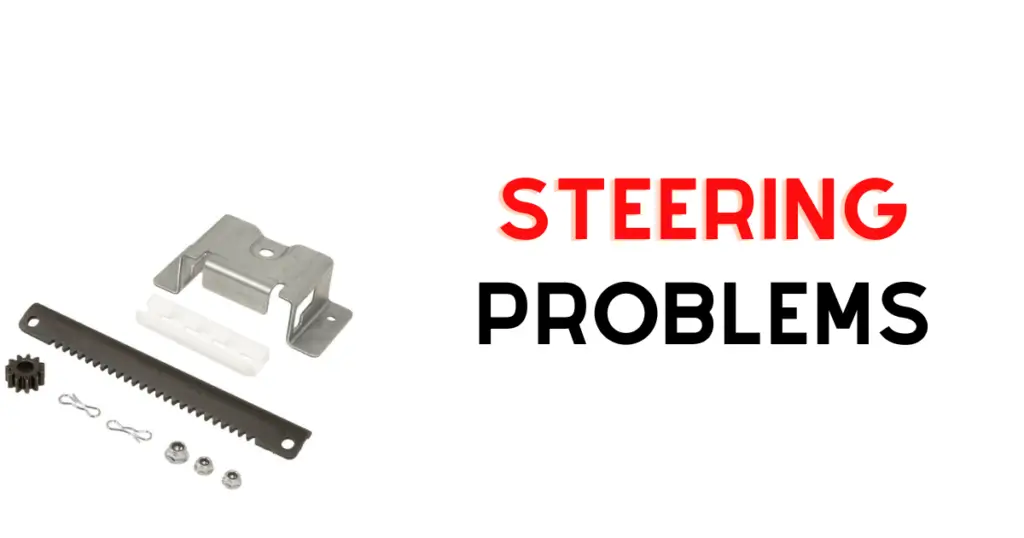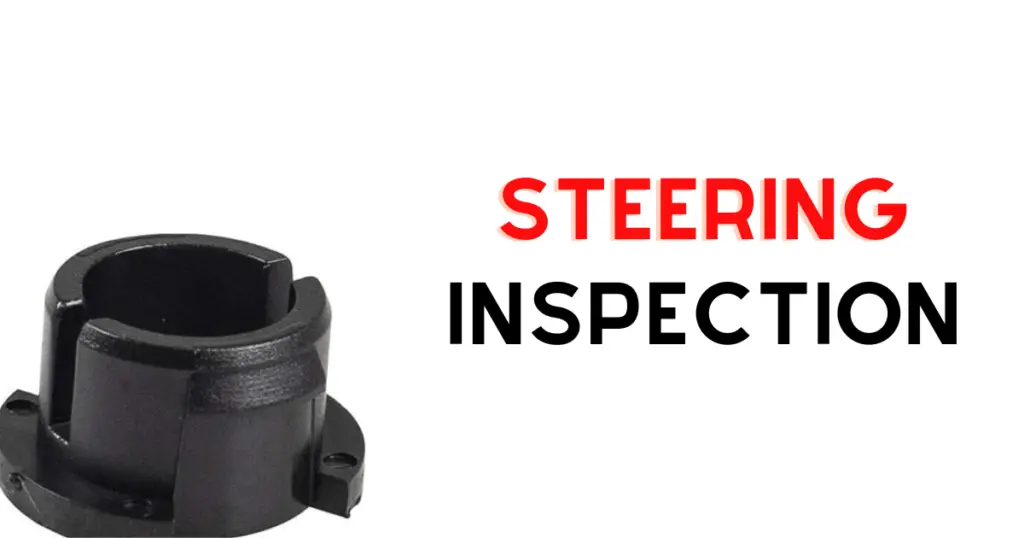Cub Cadet is a well-known brand in the lawn mower industry, providing high-quality mowers to homeowners and professionals alike. However, like any piece of machinery, Cub Cadet mowers can experience steering problems over time. These problems can range from loose or stiff steering wheels to misaligned steering arms and power steering leaks.
One common issue with Cub Cadet steering is a loose or wobbly steering wheel. This can be caused by several factors, including worn steering components, loose bolts, or a damaged steering gear case. To fix this problem, it is important to identify the root cause and replace any damaged parts or tighten loose bolts as necessary.
Another common steering problem with Cub Cadet mowers is vibration while steering. This can be caused by misaligned steering arms or worn steering components. To fix this issue, it is important to check the alignment of the steering arms and replace any worn parts. Regular maintenance and inspections can also help prevent steering problems and ensure smooth operation of your Cub Cadet mower.
Related problems:
– Cub Cadet Starter Solenoid Problems: Causes and Solutions
– Cub Cadet Starting Problems: Quick Troubleshooting Guide
– Cub Cadet Ignition Switch Problems: Tips, Tricks, and More
– Cub Cadet Carburetor Problems: Common Issues and Solutions
– Cub Cadet Hydrostatic Transmission Problems (Complete Guide)
Identifying Common Cub Cadet Steering Problems

When it comes to Cub Cadet mowers, steering problems can arise due to a variety of reasons. Identifying these problems is the first step towards resolving them. Here are some of the most common steering problems that Cub Cadet owners may encounter:
Loose Steering Wheel
A loose steering wheel is a common issue that Cub Cadet owners face. This can be caused by a variety of reasons, such as worn-out tie rods, steering columns, or gears. If the steering wheel feels loose or wobbly, it’s important to troubleshoot the issue and fix it as soon as possible. Ignoring a loose steering wheel can lead to further damage and costly repairs.
Difficulty in Turning
Another common steering problem that Cub Cadet owners may face is difficulty in turning. This can be caused by a number of factors, such as low fluid levels in the steering system, damaged steering racks or gears, or debris in the system. If the steering wheel is hard to turn, it’s important to troubleshoot the issue and fix it as soon as possible. This will ensure that the mower is safe and easy to operate.
Vibration in the Steering
Vibration in the steering is another common issue that Cub Cadet owners may face. This can be caused by a variety of reasons, such as worn-out tie rods, steering columns, or gears. If the steering wheel vibrates while the mower is in operation, it’s important to troubleshoot the issue and fix it as soon as possible. Ignoring a vibrating steering wheel can lead to further damage and costly repairs.
In summary, steering problems are a common issue that Cub Cadet owners may face. Identifying these problems early on and troubleshooting them is crucial to ensuring the safety and longevity of the mower. If you’re experiencing any of the common steering problems mentioned above, it’s important to take action and resolve the issue as soon as possible.
Inspecting the Steering System

Regular inspections of the Cub Cadet steering system can help prevent steering problems and ensure a smooth operation of the mower. Here are some key areas to inspect:
Steering Gear and Linkage
The steering gear and linkage are crucial components of the Cub Cadet steering system. Inspect them for any signs of wear and tear, cracks, or damage. If any of these issues are present, they should be repaired or replaced immediately to prevent further damage.
Tires and Wheels
The tires and wheels of the Cub Cadet mower play a vital role in the steering system. Check the tire pressure and condition regularly. Low tire pressure or worn-out tires can cause steering problems. If the tires are worn out, they should be replaced with new ones.
Steering Shaft
The steering shaft is responsible for transmitting the steering input from the steering wheel to the steering gear. Inspect the steering shaft for any damage or wear. If the shaft is damaged, it should be replaced immediately.
In addition to the above components, inspecting the wheel bearings and front wheels can also help prevent steering problems. Regular maintenance and inspection of the Cub Cadet steering system can help ensure a safe and efficient operation of the mower.
Maintenance and Adjustments
Regular Maintenance
To avoid steering problems, regular maintenance is essential. It is recommended to inspect the steering system before each use. Check for any loose components or damaged parts and repair or replace them as needed. Tighten any loose bolts or nuts and ensure all components are securely fastened.
Furthermore, it is important to keep the steering system clean from debris, grass clippings, and other materials that can accumulate and cause problems. Regular cleaning can help prevent steering issues and ensure smooth operation of the Cub Cadet mower.
Adjusting Steering Components
If the steering of the Cub Cadet mower is not functioning properly, adjustments may need to be made to the steering components. Adjusting the steering arms can help to fix misalignment issues. To adjust the steering arms, the mower must be turned off. Using a wrench, unscrew the bolts on both control arms. Adjust the steering arms from left to right and re-tighten the bolts.
Lubrication and Cleaning
Lubrication is important for the smooth operation of the steering system. Regularly lubricate the steering shaft, bearings, and bushings with a high-quality lubricant. This can help prevent wear and tear and prolong the life of the steering components.
Cleaning the steering system is also important. Use a soft-bristled brush to remove any debris or grass clippings that may have accumulated on the steering system. Avoid using water or harsh chemicals to clean the steering system, as this can cause damage to the components.
By following these maintenance tips and making necessary adjustments, Cub Cadet owners can prevent steering problems and ensure their mower operates smoothly.
Troubleshooting and Repair
If you are experiencing issues with your Cub Cadet’s steering, a thorough inspection and maintenance routine can prevent steering problems and ensure smooth operation of the mower. Here are some troubleshooting steps to help you identify and fix the problem.
Worn or Damaged Parts
One of the most common causes of steering problems in Cub Cadet mowers is worn or damaged parts. Check the steering system for any loose components or damaged parts such as bushings, bearings, or tie rods. If any of these parts are worn or damaged, they should be replaced immediately to prevent further damage to the steering system.
Steering Mechanism Issues
Another common cause of steering problems is issues with the steering mechanism itself. Check for any loose or damaged components such as the steering wheel, steering column, or steering gear. If any of these components are damaged or loose, they should be repaired or replaced as needed.
Hydraulic System Checks
In some cases, steering problems in Cub Cadet mowers may be caused by issues with the hydraulic system. Check the hydraulic fluid level and ensure that it is at the correct level. If the fluid level is low, add more fluid and check for leaks. If there are any leaks in the hydraulic system, they should be repaired immediately to prevent further damage to the steering system.
If you are unable to troubleshoot or fix the steering problem on your own, it is recommended that you seek professional assistance from a mechanic or Cub Cadet dealer. They have the expertise and tools needed to diagnose and repair any issues with your Cub Cadet’s steering system.
Conclusion
In conclusion, Cub Cadet mowers are reliable machines that can provide years of smooth operation and precise control. However, like any other machine, they are not immune to problems, and steering issues can be a major headache for owners.
Some common Cub Cadet steering problems include loose steering wheels, misaligned steering arms, and difficulty in turning the steering wheel. These problems can be caused by loose components, damaged parts, or misaligned steering arms.
To ensure optimal steering performance, it is important to regularly inspect and maintain the steering system of your Cub Cadet mower. This can include checking for loose or damaged components, tightening gears or bearings that may have become loose due to constant vibration, and replacing any damaged gears or bearings.
In addition, it is important to ensure that the steering arms are properly aligned. If they are misaligned, it can cause steering problems that can be difficult to diagnose and fix.
By following these simple maintenance tips, you can ensure that your Cub Cadet mower continues to provide smooth operation and precise control for years to come.